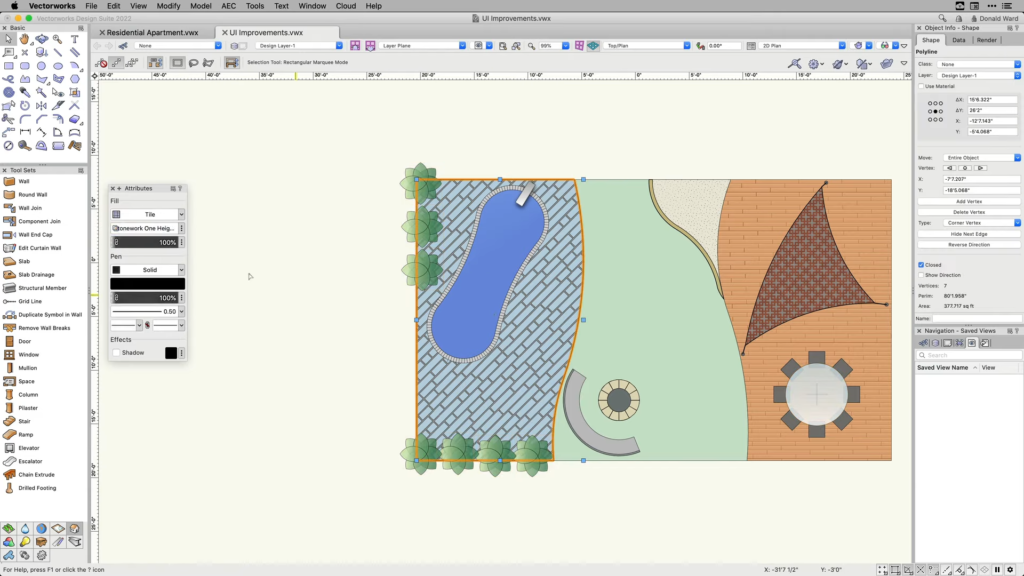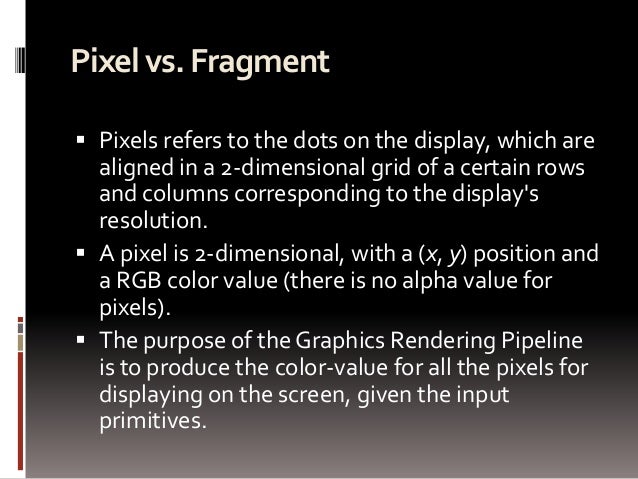

Graphics level being used: OpenGL 4.6 (primary GPU’s maximum) Redraw scene when viewports are exposed: On Video pass-through to primary display device > Integrated accelerated graphics device with 4 adapter port(s)
Opengl vectorworks 2022 driver#
Primary OpenGL: NVIDIA RTX A5000 Laptop GPU (NVidia) Memory: 16GB, Driver date: 6-22-2022 (M-D-Y).
Opengl vectorworks 2022 windows#
Windows Main Display is laptop’s integrated screen or built-in port > Integrated graphics device with 4 adapter port(s) Primary display: Intel(R) UHD Graphics (Intel) Memory: 1GB, Driver date: 8-4-2022 (M-D-Y). Windows 11 (0 SR0.0) or greater (Physical RAM: 64Gb)Ĭomputer platform: LAPTOP - Unplugged ~38 minutes left Usually everything should be automatically updated. To use: set up your drawing in wireframe mode, and then set your rendering style to OpenGL.Hi, Thank you.

The downside is that you can’t get colors, but if you don’t need that, this is a great method. One can use the OpenGL renderer to fake an HL render. There is, however, a hack that I’ve found that can do the functional equivalent of an HL render in a fraction of the time. I’m talking about arena-size sets, there’s no reason it should take hours to cook. But for semi-complicated scenes, HL renderings can take literally hours. And that’s a shame, because HL results in some very nice renderings that clients love, the renders show depth far better than a simple wireframe view and you can give a client a good idea of what a set will look like. But HL renderings take for aaaaagggesssss to do, because they can only use one core. I mean, it works in the technical sense that eventually, yes, your drawing will be rendered, usually. Hidden line rendering in Vectorworks has been broken for at least the last two versions, and probably before that.
Opengl vectorworks 2022 how to#
You’ll have to change each and every one of the objects in these sub-groups to the new class you created so they’ll take the colors that you picked.īut today, I want to gripe about hidden line rendering, and how to do it better. Or maybe not, maybe it’ll be set to “None”. Why? Well, because fixtures are 3D objects with lots of groups and sub-groups, and the fixtures come with inconsistent class structure, like “Lighting – LED”. Even if you make a new class, set a color for it, and then set your newly-placed fixture to that class, the color won’t change.

Want to change the color of a fixture on your drawing so you don’t wind up with a bunch of fixtures being drawn with black lines? Well, first you’ll have to make a new class, because all things on your drawing get placed in the currently-selected class, but only the top-level container. (And once you convert symbols to fixtures, the program runs 99% more slowly when you select them.) Insert a truss, hang a bunch of fixtures on it, and then want to rake it? Well you are shit out of luck, hombre, because hybrid fixtures can’t be rotated like that. You’ll have to go into the object info palette, select “Set 3D orientation”, and then you can manually type in your rotation settings via the OIP. You can rotate it only around the Z axis, and even then you’ll be informed that you can’t rotate hybrid objects this way in any view other than Top / Plan. Make that same symbol a “fixture”, however, and suddenly, using the rotation tool no longer works. For instance, select a fixture symbol that you’ve dropped onto a design layer, and you can do all the things you’d expect to be able to do: move the symbol around, rotate it, etc. It does what I want it to do, but it does so in ways that are un-intuitive, extremely slow, and frustratingly inconsistent. Vectorworks is my primary stage modeling tool for tours and any other work that I do, but I agree with the consensus (a consensus I firmly and un-scientifically believe in) that Vectorworks is a huge, extremely sophisticated and often very-badly-behaved piece of bloatware.


 0 kommentar(er)
0 kommentar(er)
